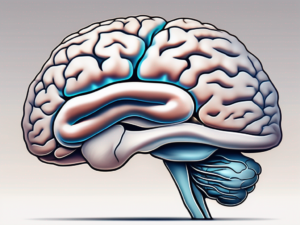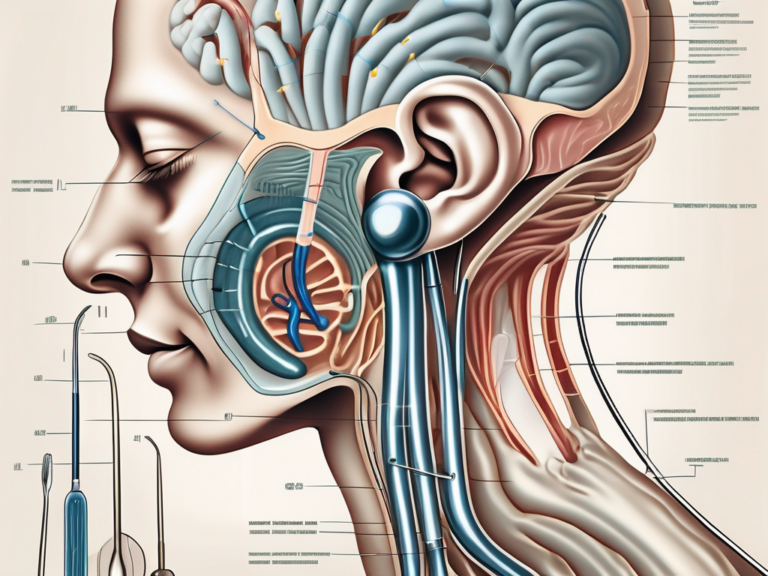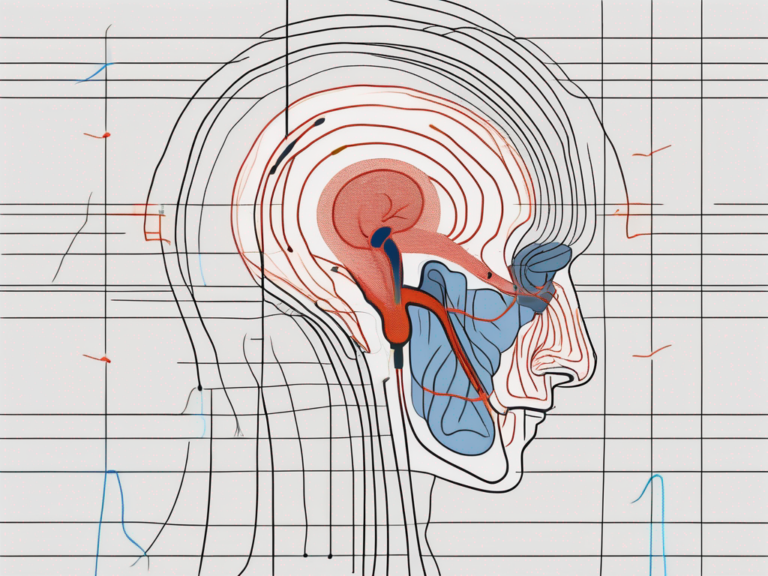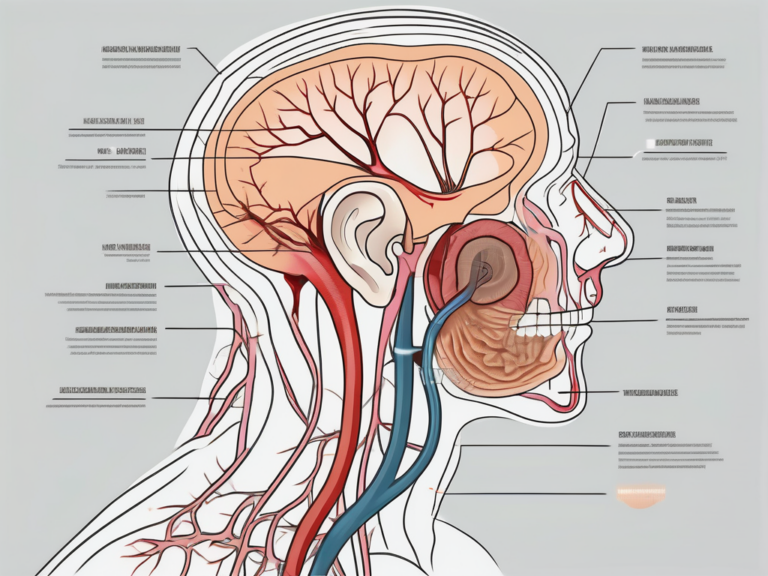The integration of the vestibular nerve and proprioception plays a crucial role in our ability to maintain balance and coordinate movement. Understanding the intricacies of this integration is essential in order to comprehend the complexity of motor control and to develop effective strategies for addressing balance-related disorders.
Understanding the Vestibular Nerve
The vestibular nerve, also known as the eighth cranial nerve, is responsible for transmitting sensory information about balance and spatial orientation from the inner ear to the brain. It consists of two components: the superior and inferior vestibular nerves.
The superior vestibular nerve arises from the utricle and semicircular canals, while the inferior vestibular nerve originates from the saccule. These two parts of the nerve primarily connect with the brainstem and cerebellum, which are key areas involved in balance control.
When we think about the anatomy of the vestibular nerve, it’s fascinating to consider how these delicate structures work together to provide us with a sense of balance. The utricle and semicircular canals, for example, are filled with fluid and tiny hair-like structures called cilia. When we move our heads, the fluid in these structures moves, causing the cilia to bend. This bending of the cilia triggers electrical signals that are then transmitted through the vestibular nerve to the brain.
But the vestibular nerve doesn’t just transmit information about balance and spatial orientation. It also plays a crucial role in our ability to perceive motion. When we’re in a moving vehicle, for instance, the vestibular nerve helps us make sense of our surroundings by providing the brain with information about our acceleration and deceleration. This information allows us to adjust our body position and maintain stability.
Without a properly functioning vestibular nerve, individuals may experience a range of symptoms. Vertigo, for example, is a common symptom that occurs when the brain receives conflicting signals from the vestibular system. This can lead to a spinning sensation and a feeling of dizziness. Difficulties with balance are also common, as the brain struggles to interpret the limited information it receives from the damaged vestibular nerve.
It’s important to note that the vestibular nerve can be affected by various conditions, including infections, tumors, and trauma. In some cases, these conditions can cause temporary or permanent damage to the nerve, resulting in ongoing balance problems. Fortunately, there are treatment options available for individuals with vestibular nerve disorders, including physical therapy and medication.
Exploring Proprioception
Proprioception refers to the body’s ability to sense its own position and movement in space. It involves the receptors located in muscles, tendons, and joints, which provide feedback to the brain regarding the position and movement of body parts.
But what exactly is proprioception and how does it work? Let’s dive deeper into this fascinating topic.
Defining Proprioception
Proprioception enables us to perform coordinated movements by informing the brain about the relative positions of different body parts. It allows us to perform activities such as walking, reaching for objects, and maintaining balance without consciously thinking about them.
Imagine trying to walk without proprioception. Every step would require intense concentration and effort, as you would have to consciously think about every movement of your legs, the position of your feet, and the balance of your body. Thankfully, proprioception takes care of all these complex calculations for us, making movement feel effortless and natural.
So, how does proprioception actually work? The receptors responsible for proprioception are called proprioceptors. These specialized sensory cells are found in muscles, tendons, and joints throughout the body. When we move, these proprioceptors detect changes in muscle length, tension, and joint angles, and send this information to the brain.
Think of proprioceptors as the body’s internal GPS system. They constantly provide the brain with real-time updates about the position and movement of our body parts. This information is then used by the brain to coordinate muscle contractions and adjust body position, allowing us to move with precision and grace.
The Role of Proprioception in Balance and Movement
Proprioception plays a vital role in maintaining balance, as it provides continuous feedback to the brain about the body’s position and orientation in relation to the environment. This information enables us to make the necessary adjustments to keep our balance and perform precise movements.
Have you ever wondered how acrobats and gymnasts are able to perform incredible feats of balance and coordination? It’s all thanks to their finely tuned proprioceptive system. These athletes have trained their proprioceptors to be exceptionally sensitive, allowing them to make split-second adjustments and maintain perfect balance even in the most challenging positions.
When proprioception is compromised, individuals may experience difficulties with coordination and balance, leading to falls and other motor control issues. This can occur due to various factors, such as injury, neurological conditions, or aging. Physical therapy and targeted exercises can help improve proprioception and restore balance and coordination.
Understanding proprioception and its role in our daily lives can give us a greater appreciation for the incredible complexity of the human body. So the next time you effortlessly catch a ball or maintain your balance on a tightrope, remember to thank your proprioceptors for their hard work!
The Integration Process
The integration of the vestibular nerve and proprioception involves the coordination and processing of sensory information from both systems. This integration occurs primarily in the brainstem, cerebellum, and cerebral cortex, where complex neural networks interpret and combine the signals into a coherent representation of body position and movement.
When we talk about the integration of the vestibular nerve and proprioception, we are referring to the seamless collaboration between these two sensory systems. The vestibular nerve, located in the inner ear, is responsible for detecting changes in head position and movement. On the other hand, proprioception refers to the body’s ability to sense the position and movement of its limbs and joints. Together, these systems provide us with a comprehensive understanding of our body’s position and movement in space.
How the Vestibular Nerve and Proprioception Interact
The vestibular nerve and proprioception work together in a complementary manner to provide a comprehensive understanding of the body’s position and movement in space. For example, when walking on an uneven surface, the vestibular nerve detects changes in orientation, while proprioception informs the brain about the position and movement of the limbs. This collaboration allows for precise adjustments to maintain balance and prevent falls.
Imagine walking on a narrow and rocky path. As you take each step, your vestibular nerve detects the changes in your head position and movement caused by the uneven surface. At the same time, your proprioceptive system provides information about the position and movement of your limbs, allowing you to make the necessary adjustments to maintain your balance. This intricate coordination between the vestibular nerve and proprioception is essential for our daily activities, from walking to more complex movements like dancing or playing sports.
The Role of the Brain in Integration
The brain plays a crucial role in integrating the signals from the vestibular nerve and proprioception. It processes the incoming information, makes sense of it, and generates appropriate motor commands in response. This complex process involves multiple brain regions, including the cerebellum, which is responsible for fine-tuning movement and maintaining balance, and the cerebral cortex, which is involved in higher-level processing and coordination.
When the signals from the vestibular nerve and proprioception reach the brain, they are processed and interpreted by various neural networks. The cerebellum, often referred to as the “little brain,” is particularly important in this integration process. It receives input from both the vestibular nerve and proprioception and uses this information to fine-tune movement and maintain balance. Additionally, the cerebral cortex, the outer layer of the brain, is involved in higher-level processing and coordination, allowing us to perform complex movements with precision and accuracy.
It is fascinating to think about how our brain seamlessly integrates the signals from the vestibular nerve and proprioception. This integration process happens effortlessly and in real-time, allowing us to navigate our environment with ease. Whether we are walking on an uneven surface or performing intricate dance moves, our brain is constantly working behind the scenes, ensuring that our movements are coordinated and balanced.
Implications of Integration
The integration of the vestibular nerve and proprioception has significant implications for motor control, balance, and overall coordination. Understanding these implications can help researchers and clinicians develop effective strategies for managing disorders related to this integration.
The integration of the vestibular nerve and proprioception is a complex process that involves the coordination of sensory information from multiple sources. The vestibular nerve, located in the inner ear, provides information about head position and movement, while proprioception refers to the body’s ability to sense its position and movement in space. Together, these systems work in harmony to allow for smooth and coordinated movements.
When these systems work together seamlessly, movements are precise, and balance is maintained effortlessly. For example, when walking on an uneven surface, the vestibular system detects changes in head position and movement, while proprioception provides information about the position of the limbs and body. This integration allows for adjustments in muscle tone and joint position, ensuring stability and preventing falls.
However, disruptions in this integration can lead to motor control issues, balance impairments, and an increased risk of falls. In some cases, the vestibular nerve may be affected by conditions such as benign paroxysmal positional vertigo (BPPV) or Meniere’s disease. These conditions can result in dizziness, vertigo, and a loss of balance. Similarly, conditions that affect proprioception, such as peripheral neuropathy or age-related changes in joint receptors, can also disrupt the integration process.
Addressing these impairments may involve targeted rehabilitation strategies, such as physical therapy or balance training. Physical therapists can work with individuals to improve their motor control and balance through exercises that focus on strengthening specific muscle groups, improving coordination, and enhancing proprioceptive awareness. These interventions can help individuals regain their independence and reduce the risk of falls.
Individuals experiencing symptoms related to balance or coordination should consult with a healthcare professional for proper evaluation and guidance. A thorough assessment can help identify the underlying cause of the impairment and guide the development of an appropriate treatment plan. By understanding the implications of the integration of the vestibular nerve and proprioception, healthcare professionals can provide targeted interventions to improve motor control, balance, and overall coordination.
Advances in Neuroscience
Ongoing research in neuroscience is shedding new light on the integration of the vestibular nerve and proprioception, leading to a deeper understanding of how these systems function and interact.
The vestibular nerve and proprioception play crucial roles in our ability to maintain balance and coordinate movement. The vestibular nerve, located in the inner ear, provides sensory information about head position and movement, while proprioception refers to the sense of body position and movement derived from receptors in muscles, tendons, and joints. These two systems work together to ensure smooth and coordinated movement, allowing us to navigate our environment with ease.
Current Research on Vestibular Nerve and Proprioception
Scientists are continuously investigating the complex interplay between the vestibular nerve and proprioception. Researchers are exploring various aspects, such as the neural pathways involved in integration, the role of sensory feedback in motor learning, and the effects of aging on this integration process.
One area of research focuses on understanding the neural pathways that facilitate the integration of vestibular and proprioceptive information. By mapping these pathways, scientists can gain insights into how the brain processes and combines sensory inputs to generate a coherent perception of body position and movement.
Another line of investigation examines the role of sensory feedback in motor learning. Researchers are interested in understanding how sensory information from the vestibular nerve and proprioceptive receptors contributes to the refinement of motor skills. By manipulating sensory feedback during motor tasks, scientists can uncover the underlying mechanisms that drive motor learning and adaptation.
Furthermore, researchers are studying the effects of aging on the integration of the vestibular nerve and proprioception. As individuals age, there is a decline in sensory function, including changes in vestibular and proprioceptive systems. By elucidating the age-related changes in these systems, scientists can develop targeted interventions to mitigate the impact of age-related balance disorders.
These studies aim to enhance our understanding of balance control and movement coordination, ultimately improving clinical interventions for individuals with balance disorders. By unraveling the intricacies of the vestibular nerve and proprioception, researchers hope to develop more effective treatments and rehabilitation strategies for those affected by balance-related impairments.
Future Directions in Understanding Integration
The field of neuroscience is rapidly evolving, and future research will further deepen our understanding of the integration of the vestibular nerve and proprioception. Advances in technology, including neuroimaging techniques and computational modeling, will provide insights into the underlying mechanisms and facilitate the development of targeted interventions for balance-related disorders.
Neuroimaging techniques, such as functional magnetic resonance imaging (fMRI) and electroencephalography (EEG), allow researchers to observe brain activity in real-time, providing valuable information about the neural processes involved in the integration of vestibular and proprioceptive inputs. By combining these imaging techniques with behavioral experiments, scientists can gain a comprehensive understanding of the neural correlates of balance control and movement coordination.
Computational modeling is another promising approach in understanding integration. By constructing mathematical models that simulate the interactions between the vestibular nerve and proprioception, researchers can test different hypotheses and explore the potential mechanisms underlying their integration. These models can also be used to predict the effects of various interventions and guide the development of novel therapeutic strategies.
In conclusion, ongoing research in neuroscience is unraveling the complexities of the integration of the vestibular nerve and proprioception. By investigating the neural pathways, sensory feedback, and age-related changes associated with this integration, scientists aim to improve our understanding of balance control and movement coordination. With advancements in technology and computational modeling, future research will continue to expand our knowledge, ultimately leading to more effective interventions for individuals with balance-related disorders.
Conclusion
The integration of the vestibular nerve and proprioception is a complex process that underlies our ability to maintain balance and coordinate movement. Understanding this integration is crucial for addressing balance-related disorders and improving motor control. Ongoing research in the field of neuroscience continues to advance our knowledge, offering hope for improved diagnostic tools and targeted interventions. If you’re experiencing difficulties with balance or coordination, it is advisable to consult with a healthcare professional who can provide appropriate evaluation and guidance tailored to your individual needs.








+ There are no comments
Add yours